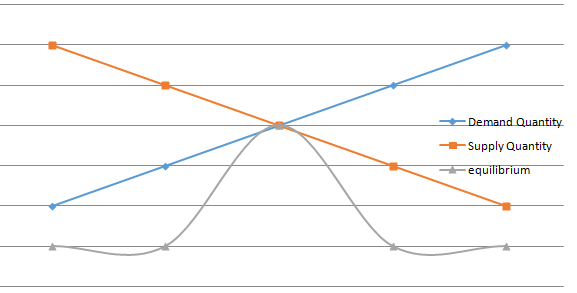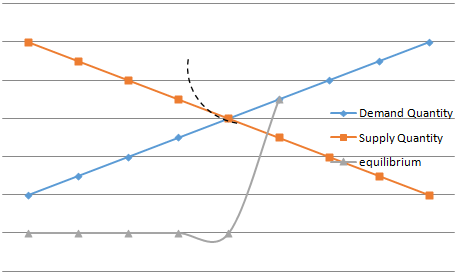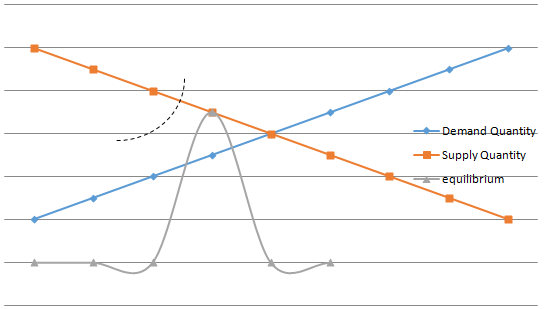Market Equilibrium refers to a business phenomenon where buyers bid against one another in an attempt to realize the selling price for the product. Therefore, it is to the discretion of the sellers to offer higher or accept lower prices for their commodities.
A change in market equilibrium may result from a shift in demand, shift in supply or both. Demand on the other hand, has a variety of determinants, some of which include:
- Future expectation of prices
- Preference
- Prices of compliments and substitutes
- Income, wealth and prices of goods.
A change in any one of these determinants leads to a shift in demand (when ceteris are not paribus).
Supply refers to the quantity of goods that sellers desire to produce and sell under some given conditions. The determining factors of supply include:
- Cost of factors of production
- Productive capacity
- Future expectation of prices.
Taking into consideration a commodity like an iphone which is at equilibrium, the selling or buying prices will be determined where the demand curve intersects supply curve. As such, the sales and purchase of an iphone in an urban setting that has sufficient population would be determined. Take the case of Nairobi Kenya where a variety of related commodities are supplied and bought; thereby, posing a stiff competition.
It has a very big population (Hoag et al., 2006). In addition, no single buyer and seller have unilateral effect on the prices in the market considering a perfect competition. There is adequate demand for mobile phones by the population structure and also sufficient supply of the same.
In such a market, change in any of the factors that affect the demand of such a commodity will definitely alter its demand. Consider a change in the price of a substitute phone, that is, a phone that has similar technological advancement and so is equally appealing to the buyers:
Data of iPhone supply and demand in Nairobi in comparison to the price
The equilibrium of the supply and demand curve intersects each other atr the 300 mark

Changing in iPhone price
The change in the price of a substitute may either be positive or negative depending on whether it is an increase or a decrease. An increase in the cost of such a substitute phone may render most buyers unwilling to buy it. Indeed, an individual would not go for an expensive phone while there is a similar one that is relatively cheap (Carbaugh, 2010).
There will, thus, be a decrease in the demand of the substitute while subsequent increase in the demand of the iphone. This will cause a shift to the right of the demand curve. Such a shift will tend to have two effects; raising equilibrium quantity and raising equilibrium price

A leftward shift in demand would reverse the effect
A change in any factor affecting supply—for instance cost of factors of production—results in either rightward or leftward shift in supply curve. When the cost of production goes down, the quantity of goods that suppliers are willing and able to supply increases.

A right ward shift also tends to have two effects; lowering equilibrium price and raising equilibrium quantity. Consequently, a left shift has a reverse effect on the supply-demand graph. The degree of responsiveness of one variable, for instance, Iphone demand, to another is known as Elasticity (Dwivedi, 2008).
Incase both demand and supply of the iphone has changed at the same time, then depending on the determinants of its supply and demand, there can be a shift to the left, right, up or down.
The graph below shows the event where the demand curve shifts up and the supply curve shifts down. As a result the equilibrium shifts up to the 350 mark of the demand axis and 500 mark on the supply axis.

References
Carbaugh, R. (2010). Contemporary Economics: An Applications Approach, London: Routledge.
Dwivedi, D. (2008). Microeconomics I, New York City: McGraw Hill.
Hoag, A. & Hoag, J. (2006). Introductory Economics, London: Routledge.